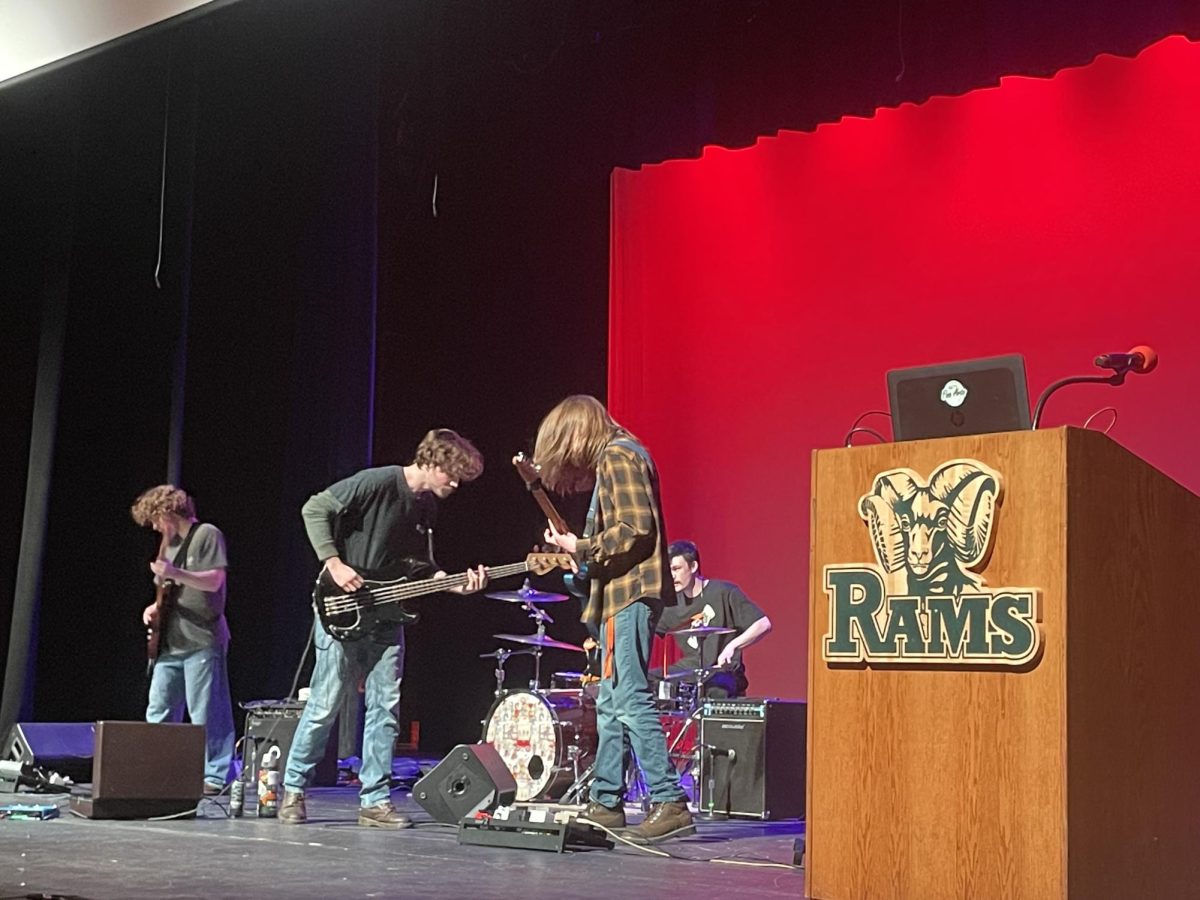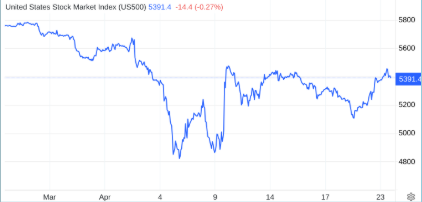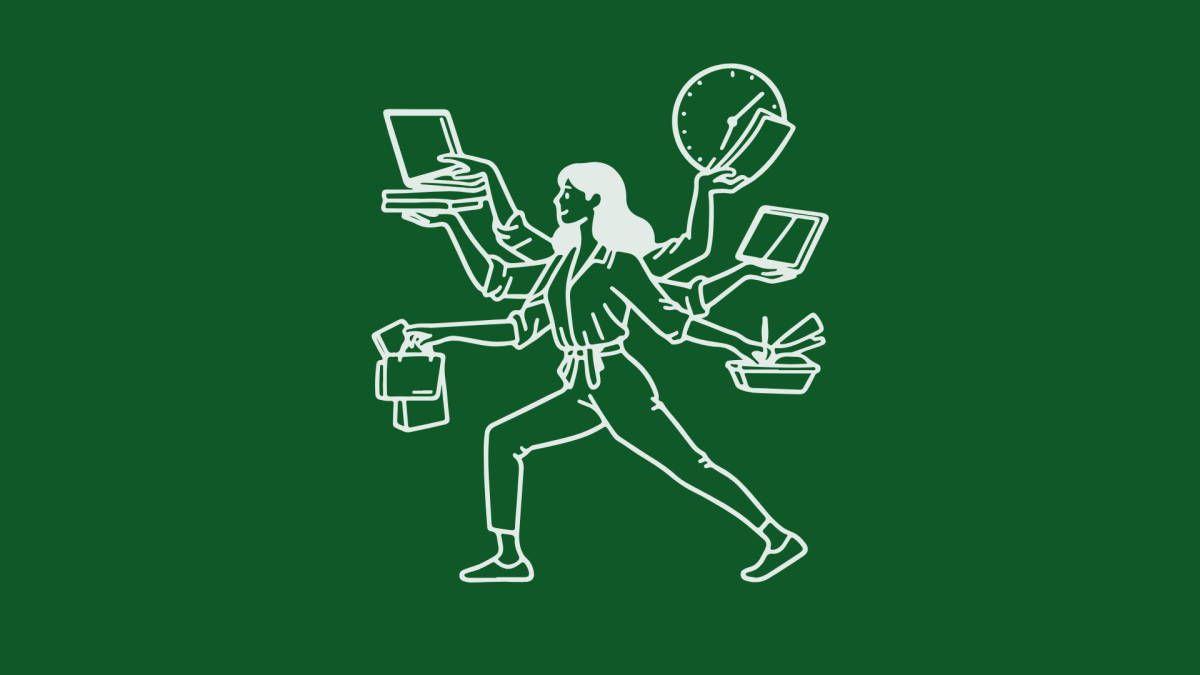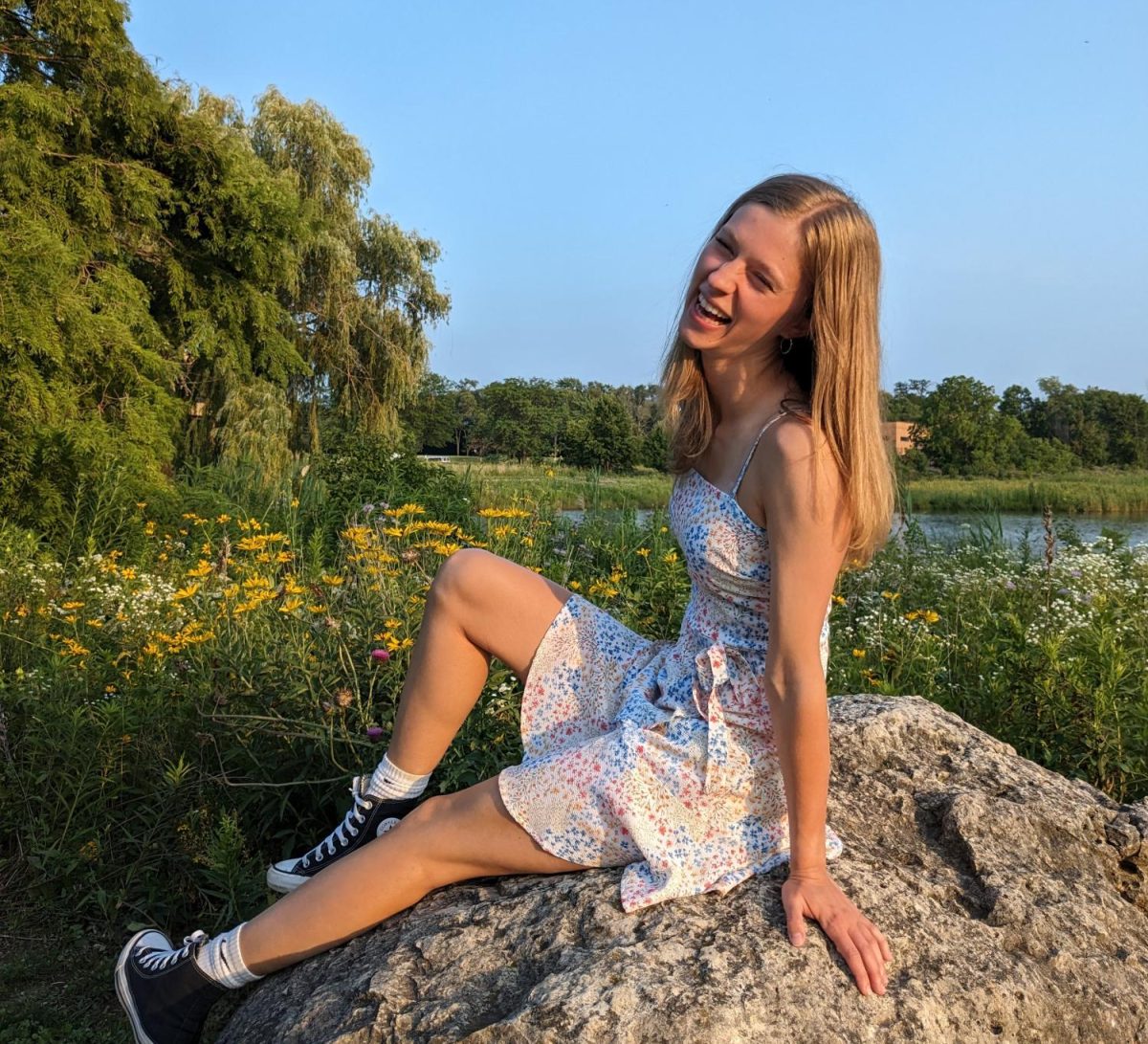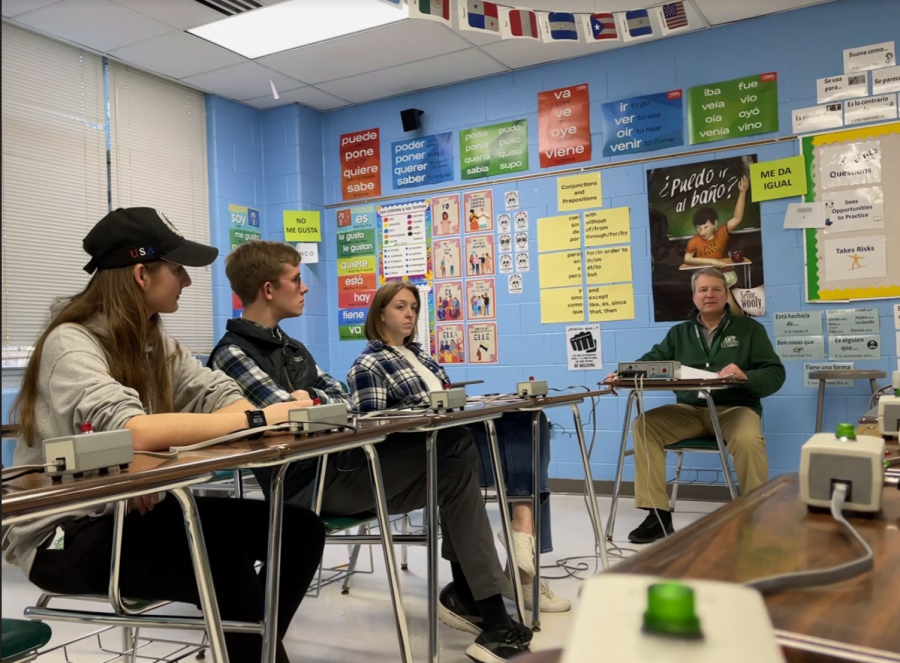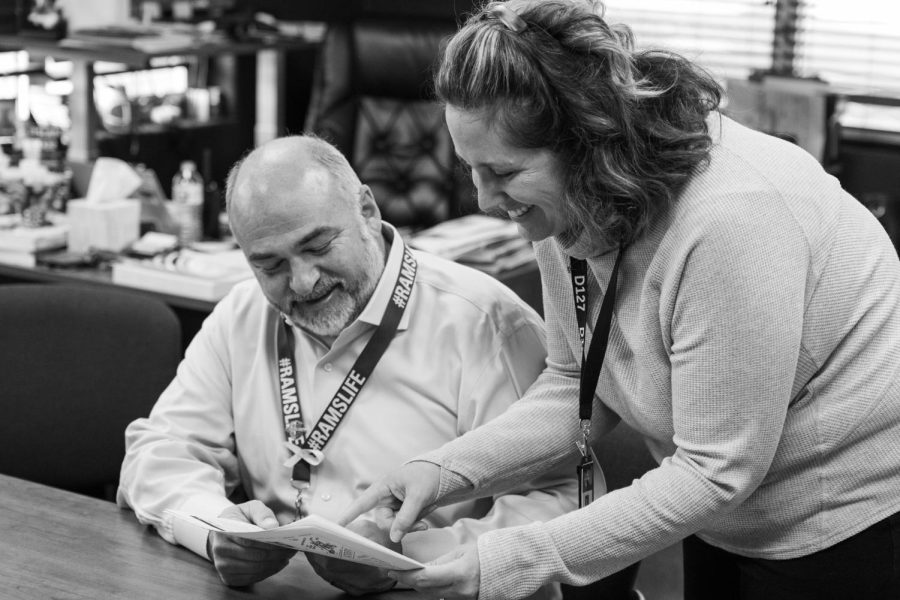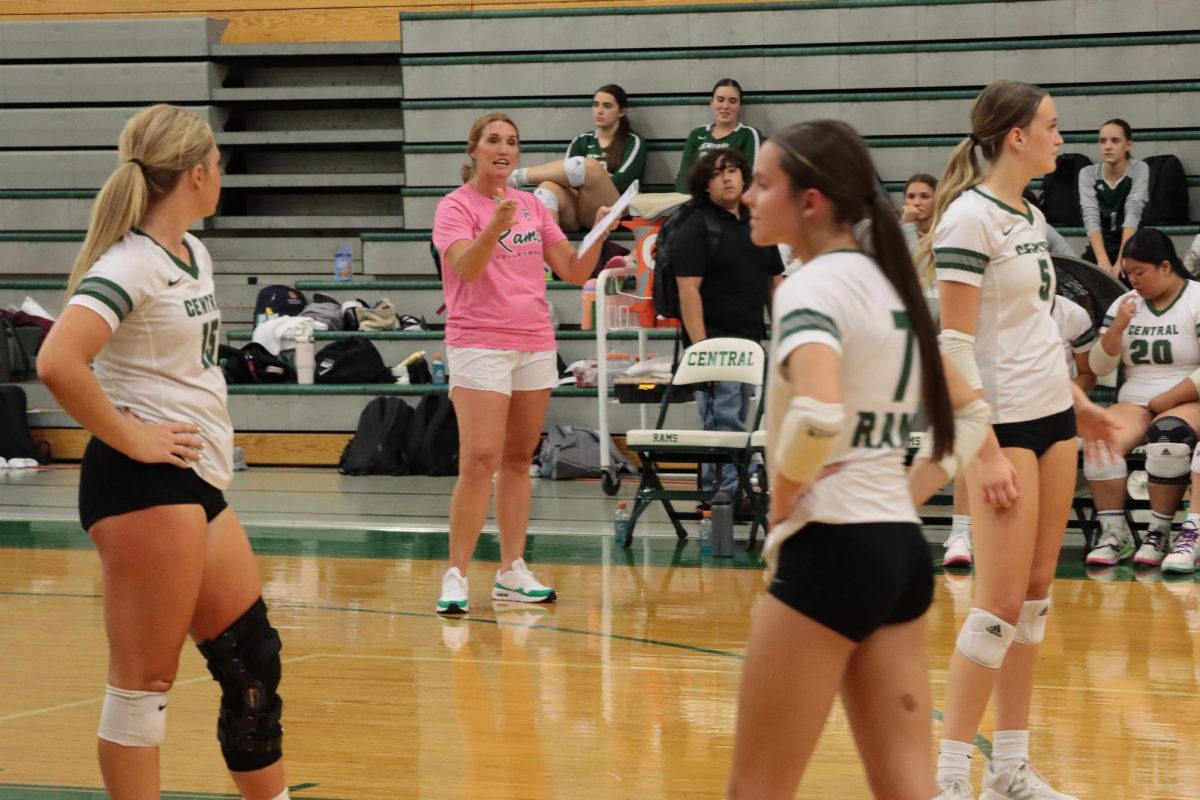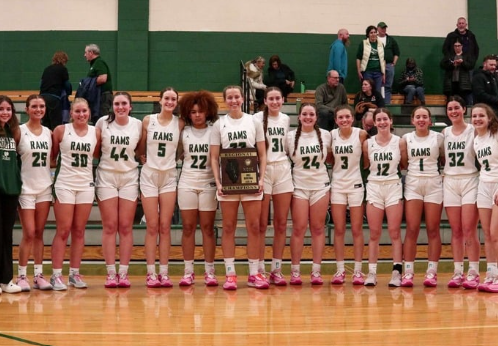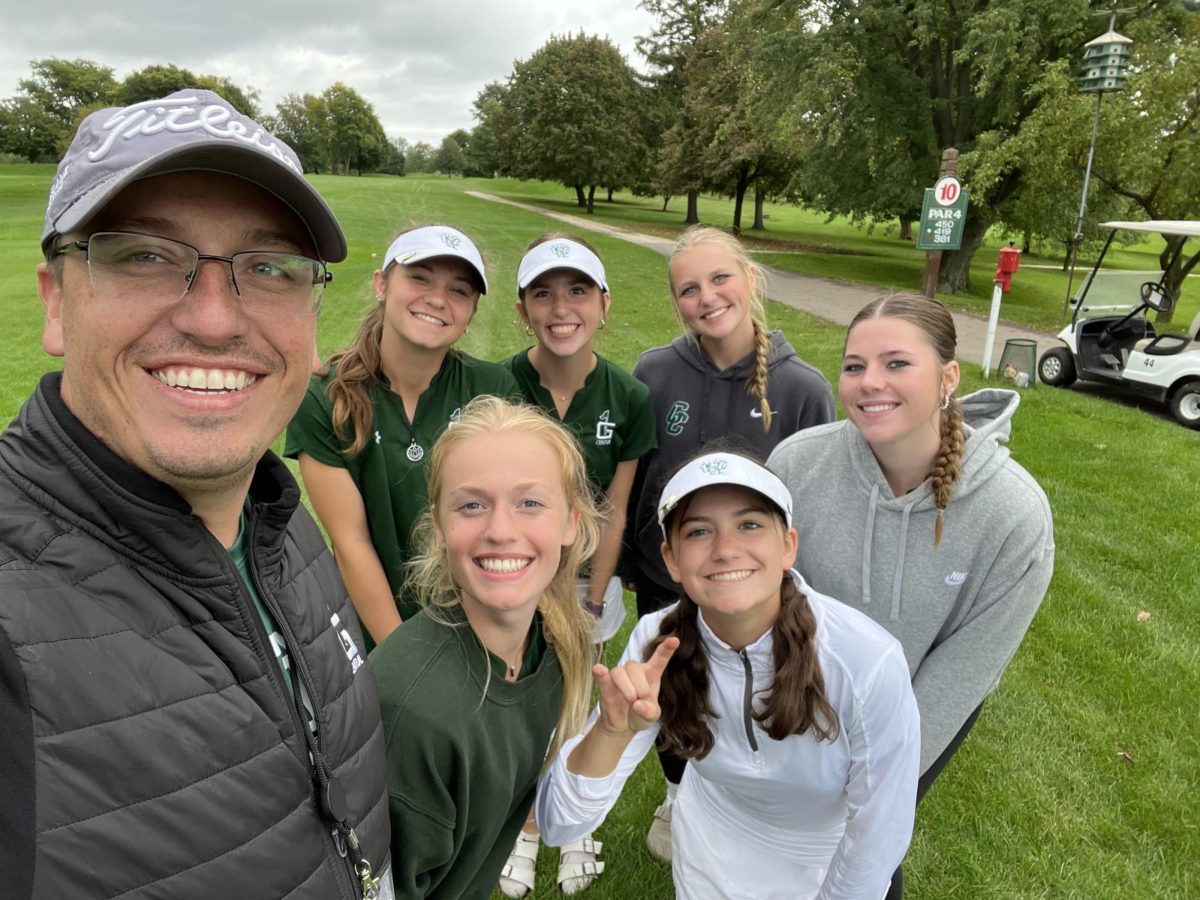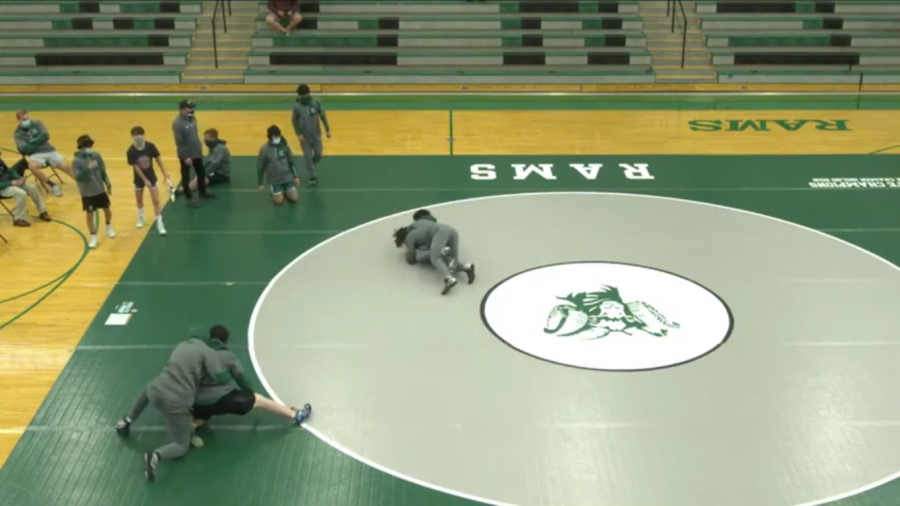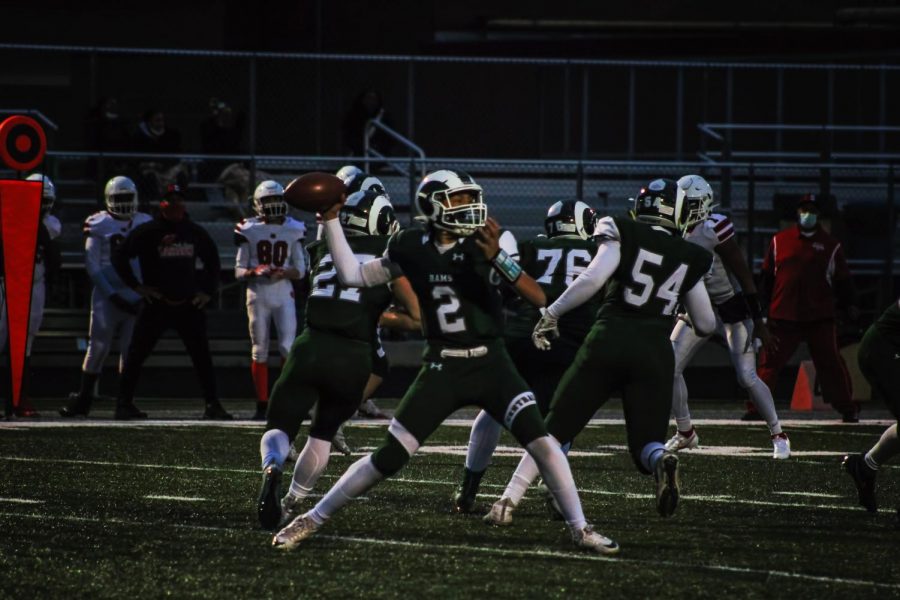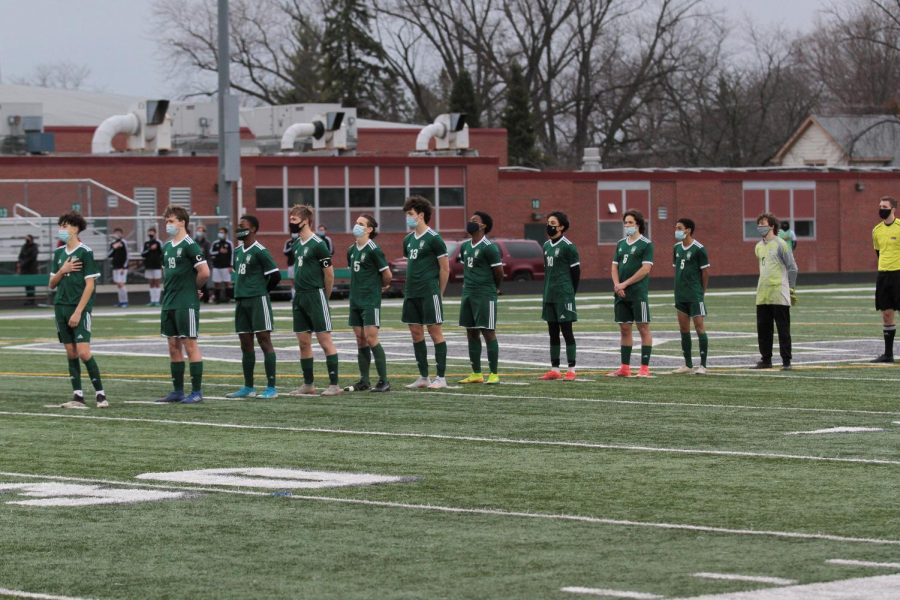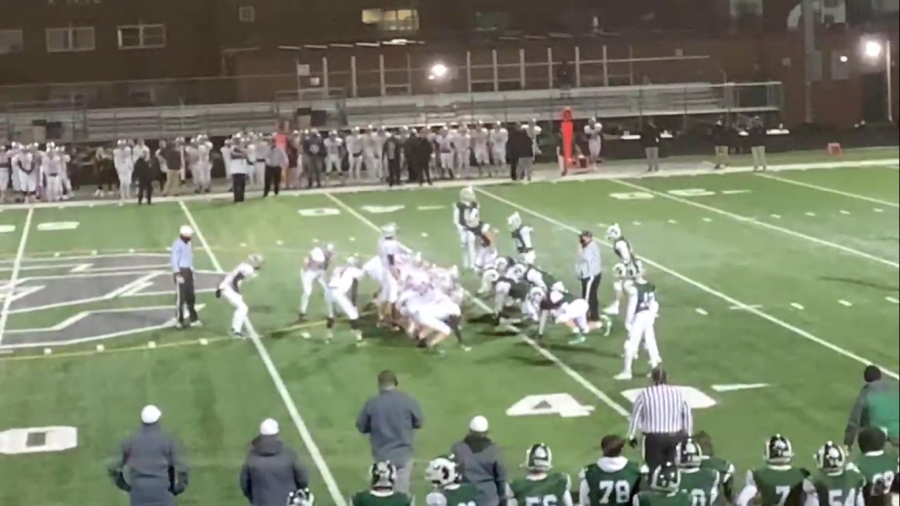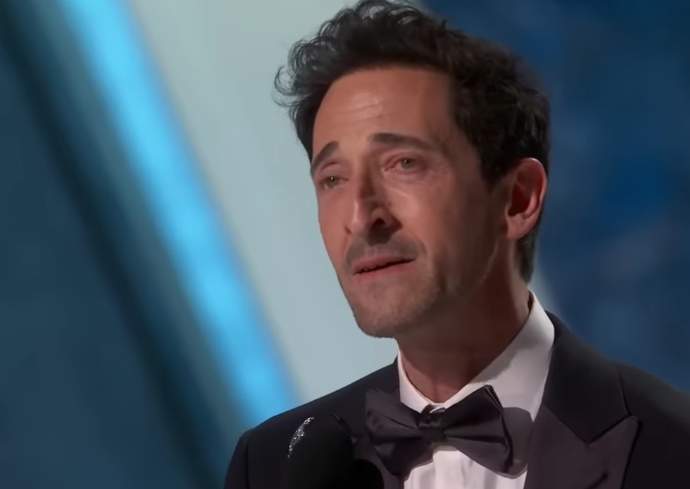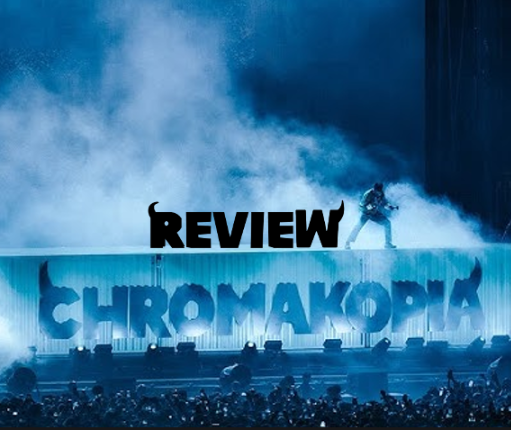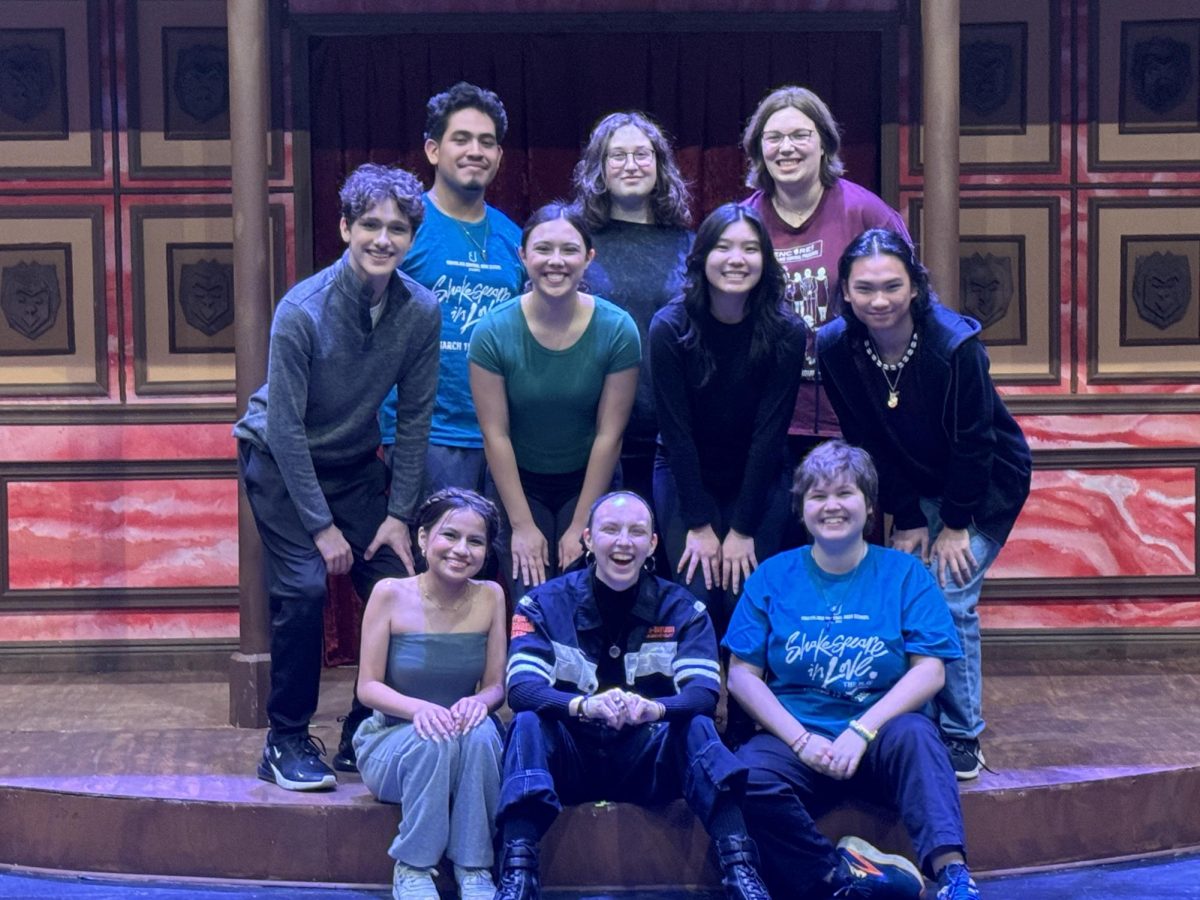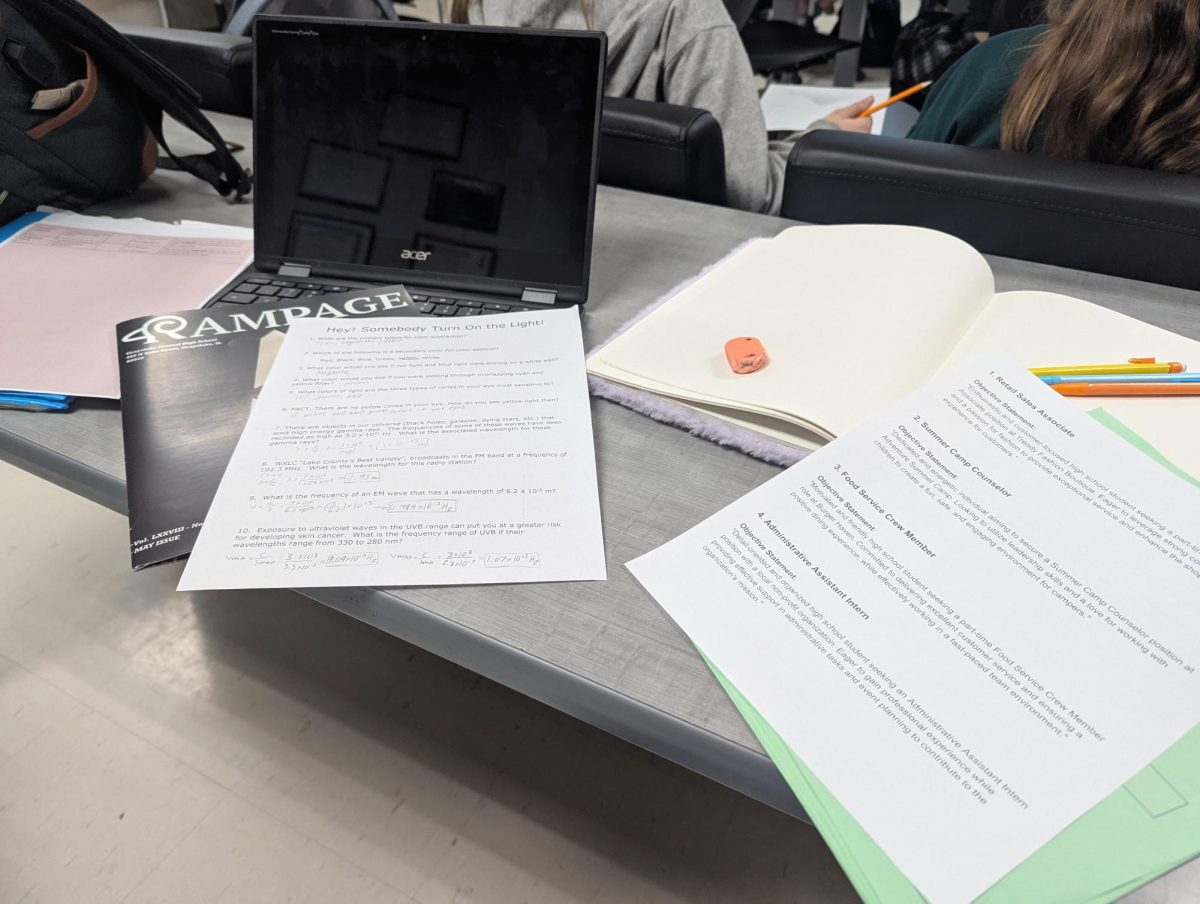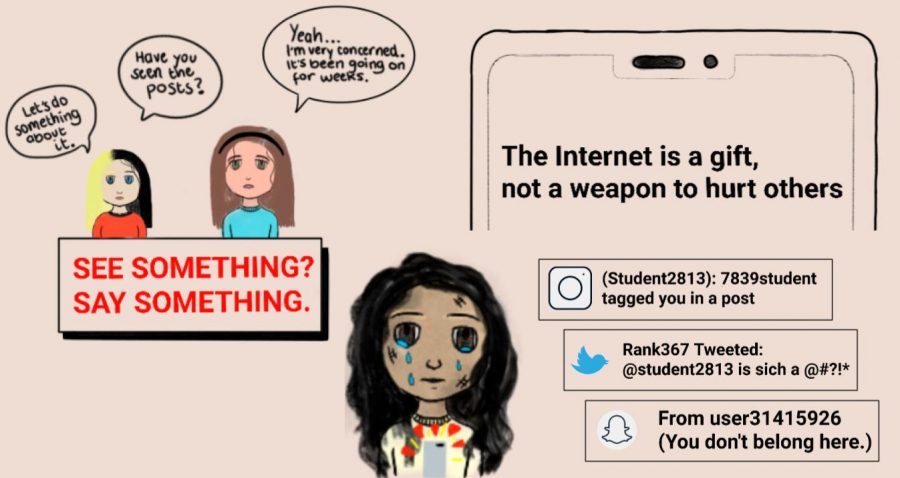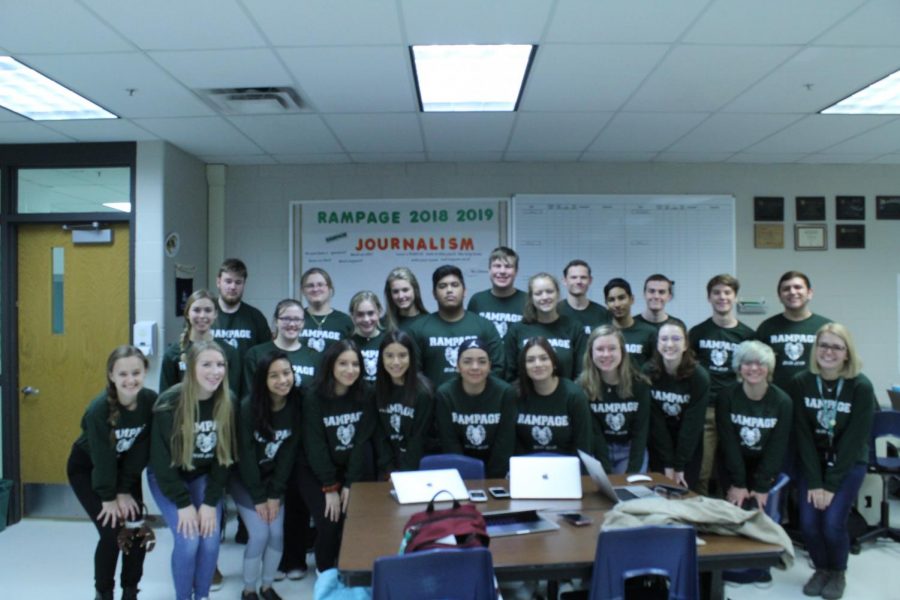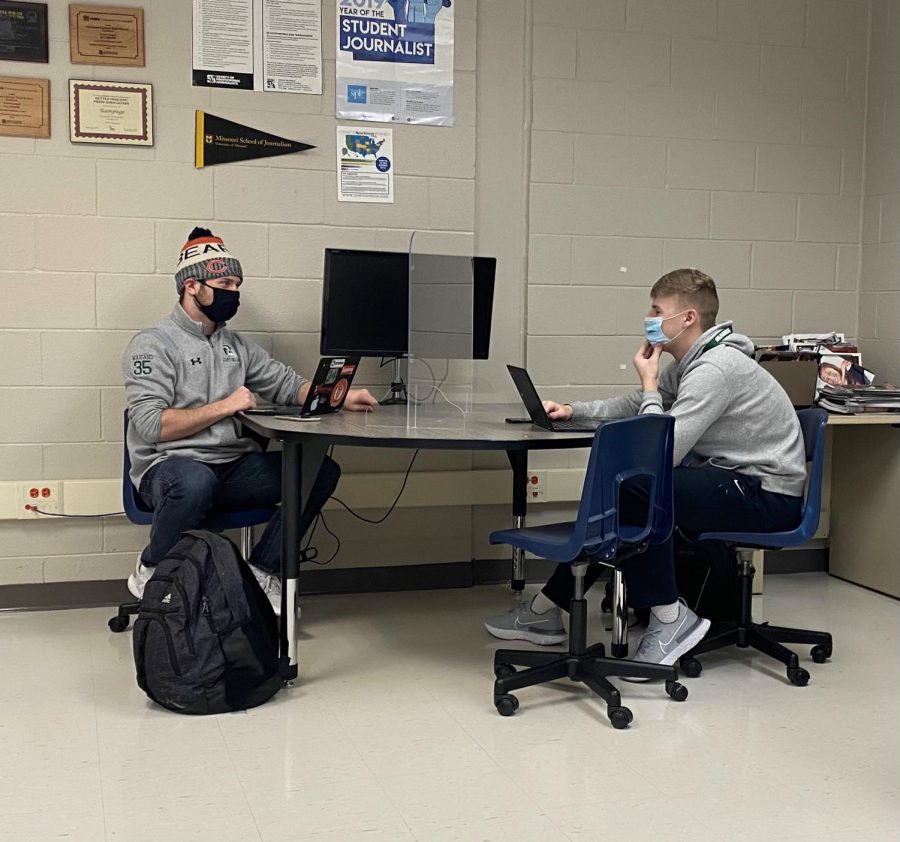GCHS switches to hybrid learning model
GCHS officially implemented the hybrid learning plan on Jan. 19 after many months of planning. D127 board members conducted numerous board meetings about switching to a hybrid model to make sure that everything will go according to plan.
Photo provided by: Joselind Manzano
On Jan. 29, staff reporters Payton Waigand and Mark Guckenberger collaborate in class for RAMPAGE’s first publication for the second semester. Waigand and Guckenberger worked on their stories while safely observing the protocols of six-feet distancing and wearing masks. “We’ve gained more personal touch that we’ve been missing in the past couple of months. I’ve been able to get a lot more done, and get a change of view, which helps with my motivation,” said Waigand.
February 5, 2021
GCHS officially implemented the hybrid learning plan on Jan. 19 after many months of planning. D127 board members conducted numerous board meetings about switching to a hybrid model to make sure that everything will go according to plan.
Sanitizing and cleaning of the GCHS campus is conducted every evening after students and staff leave to make sure that everything is safe to use and that the building is as COVID-free as possible.
Associate Principal of Curriculum and Instruction Barbara Georges explains their daily routine is to make sure that students who belong to groups A and B are good to go before entering the building. “Every morning you get the email to self-certify with CrisisGo,” Georges said.
Principal Dan Landry said that moving to hybrid learning is looking to be quite safe and effective. He mentioned a lot of feedback from both students and staff was evaluated. “All the other teachers are like ‘Oh my gosh. I’m so glad to have kids back in the building,’ and it was all just really positive feedback from staff. More [changes] could happen, but the reality is we planned well enough for the staff to be pretty happy. The kids that I spoke with were just over the moon to be back at school,” Landry said.
In addition to what Landry said, Georges recognized the importance of going back to school physically. Because some students learn better in person rather than through remote learning, forming bonds and personal connections played a big role in why students prefer going back to school with their teachers, coaches, and friends while observing safety measures and protocols, versus simply logging into a zoom meeting to complete largely asynchronous work.
“The goal that we always talk about from a leadership point of view is seeing our students, taking care of them, and building those relationships in person,” Georges explains. “Our teachers have done a fantastic job of educating remotely, but a big part of school is that personal connection with your teachers with your classmates, coaches, your friends. And that piece has just been missing.”
Senior Mary Zipfel shared her experience on the first day of hybrid learning. “Being at home in the same room doing my classes and homework all day is not fun. I find it hard to stay motivated to work, but when I’m in person, I am more engaged in the class and can pay attention better in the school environment,” Zipfel said.
In addition, junior Charlotte Storckman expressed excitement while sharing her thoughts on the benefits of face-to-face classes. “I enjoyed getting to see people in person that I have not been able to see for nearly a year. It was so nice not to have to worry about technical difficulties, and it was much easier to participate in class than it is on Zoom,” Storckman explained. “I feel that in-person learning is much more valuable than online learning. It’s easier to participate, ask questions, and get a better understanding of the material when I receive in-person teaching,” Storckman said.
With optimism, Landry explained the game plan for Central staying in hybrid learning through the end of the school year, knowing that COVID-19 vaccines are already within reach for much of the stuent population. “Until we can get to phase five of the governor’s plan where we can have just regular life again, there’s a chance that we’ll stay in hybrid until that point, but it’s really hard to predict,” Landry said. In addition, Landry mentioned that “Teachers and school personnel can start getting their vaccinations sometime in February.”
Despite the positive feedback, Georges noted a very common problem seen among staff. “The biggest challenge that would be helpful for students to know is that I’m getting a lot of requests to change groups… from A to B or to change from C [fully remote],” Georges said. “There’s a backlog of those requests, and it takes us some time because there are [multiple] systems that require manual updates: All the CrisisGo’s subscriptions, the emergency plans, PowerSchool, the CDC, all of these things exist with the state of Illinois–all those things have to get updated. So there’s no way to change A and B, and there’s no way to go from C [to] back into the building,” Georges explained.
Overall, Landry expressed his gratitude for the success of implementing the hybrid model in Central. “This school is so much better with students in it. Having the teachers back… and having the kids back… has been fantastic for me.”

